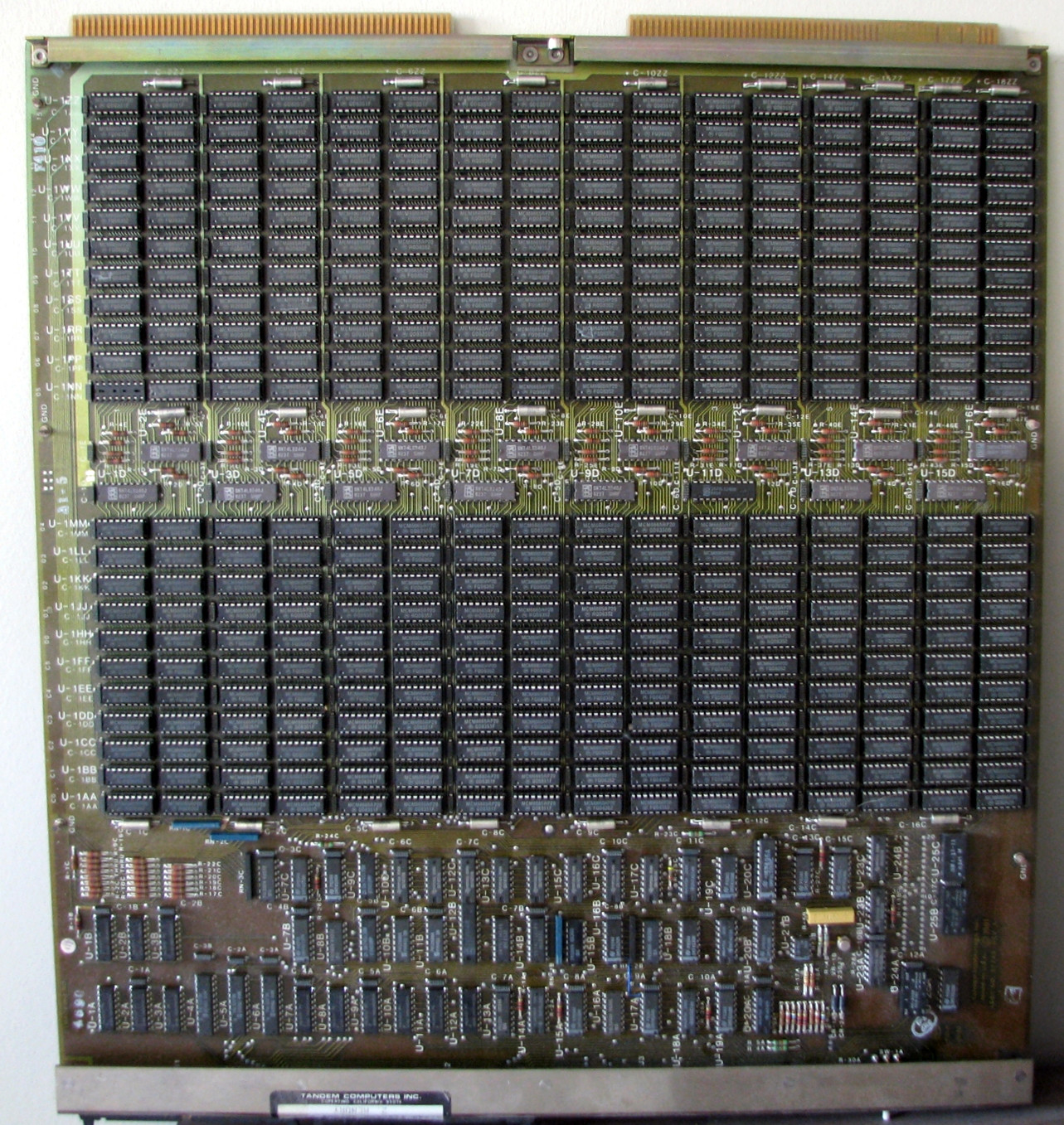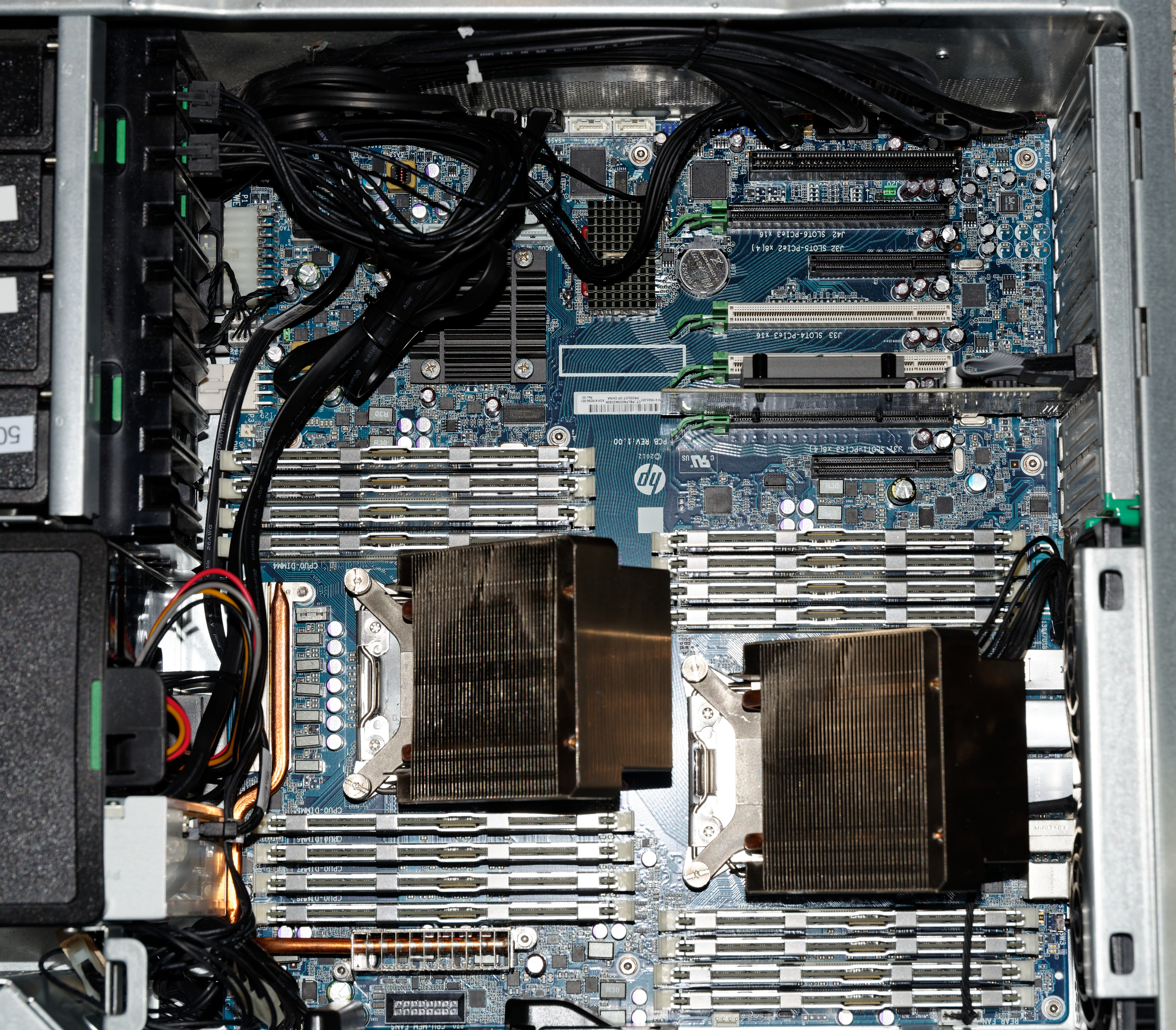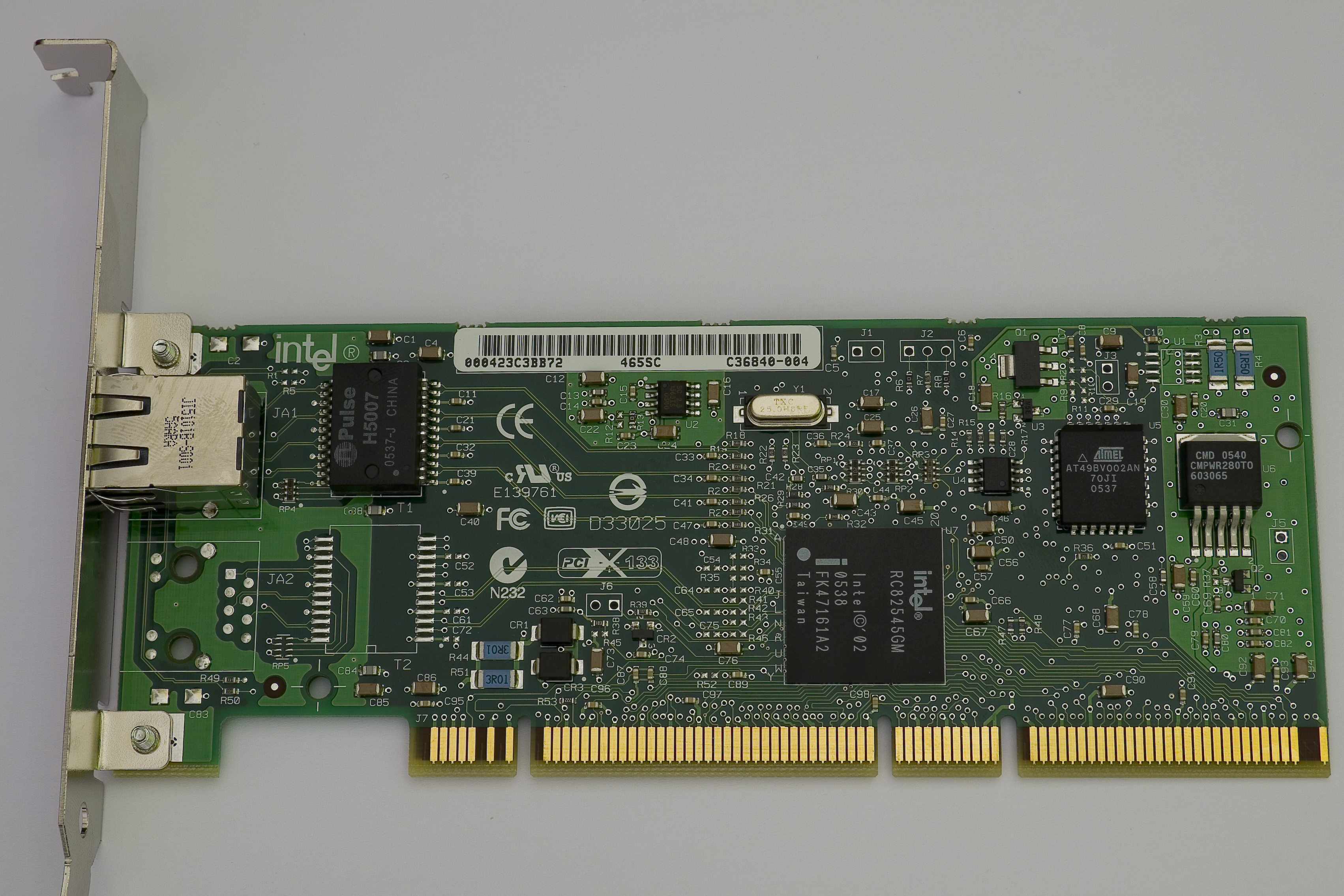|
Alpha 21364
The Alpha 21364, code-named "Marvel", also known as EV7 is a microprocessor developed by Digital Equipment Corporation (DEC), later Compaq Computer Corporation, that implemented the Alpha instruction set architecture (ISA). History The Alpha 21364 was revealed in October 1998 by Compaq at the 11th Annual Microprocessor Forum, where it was described as an Alpha 21264 with a 1.5 MB 6-way set-associative on-die secondary cache, an integrated Direct Rambus DRAM memory controller and an integrated network controller for connecting to other microprocessors. Changes to the Alpha 21264 core included a larger victim buffer, which was quadrupled in capacity to 32 entries, 16 for the Dcache and 16 for the Scache. It was reported by the ''Microprocessor Report'' that Compaq considered implementing minor changes to branch predictor to improve branch prediction accuracy and doubling the miss buffer in capacity to 16 entries instead of 8 in the Alpha 21264. It was expected to be taped-out in ... [...More Info...] [...Related Items...] OR: [Wikipedia] [Google] [Baidu] |
Microprocessor
A microprocessor is a computer processor where the data processing logic and control is included on a single integrated circuit, or a small number of integrated circuits. The microprocessor contains the arithmetic, logic, and control circuitry required to perform the functions of a computer's central processing unit. The integrated circuit is capable of interpreting and executing program instructions and performing arithmetic operations. The microprocessor is a multipurpose, clock-driven, register-based, digital integrated circuit that accepts binary data as input, processes it according to instructions stored in its memory, and provides results (also in binary form) as output. Microprocessors contain both combinational logic and sequential digital logic, and operate on numbers and symbols represented in the binary number system. The integration of a whole CPU onto a single or a few integrated circuits using Very-Large-Scale Integration (VLSI) greatly reduced the cost of ... [...More Info...] [...Related Items...] OR: [Wikipedia] [Google] [Baidu] |
Double Data Rate
In computing, a computer bus operating with double data rate (DDR) transfers data on both the rising and falling edges of the clock signal. This is also known as double pumped, dual-pumped, and double transition. The term toggle mode is used in the context of NAND flash memory. Overview The simplest way to design a clocked electronic circuit is to make it perform one transfer per full cycle (rise and fall) of a clock signal. This, however, requires that the clock signal changes twice per transfer, while the data lines change at most once per transfer. When operating at a high bandwidth, signal integrity limitations constrain the clock frequency. By using both edges of the clock, the data signals operate with the same limiting frequency, thereby doubling the data transmission rate. This technique has been used for microprocessor front-side busses, Ultra-3 SCSI, expansion buses ( AGP, PCI-X), graphics memory (GDDR), main memory (both RDRAM and DDR1 through DDR5), and the ... [...More Info...] [...Related Items...] OR: [Wikipedia] [Google] [Baidu] |
Semiconductor Fabrication
Semiconductor device fabrication is the process used to manufacture semiconductor devices, typically integrated circuit (IC) chips such as modern computer processors, microcontrollers, and memory chips such as NAND flash and DRAM that are present in everyday electrical and electronic devices. It is a multiple-step sequence of photolithographic and chemical processing steps (such as surface passivation, thermal oxidation, planar diffusion and junction isolation) during which electronic circuits are gradually created on a wafer made of pure semiconducting material. Silicon is almost always used, but various compound semiconductors are used for specialized applications. The entire manufacturing process takes time, from start to packaged chips ready for shipment, at least six to eight weeks (tape-out only, not including the circuit design) and is performed in highly specialized semiconductor fabrication plants, also called foundries or fabs. All fabrication takes place inside a c ... [...More Info...] [...Related Items...] OR: [Wikipedia] [Google] [Baidu] |
CMOS
Complementary metal–oxide–semiconductor (CMOS, pronounced "sea-moss", ) is a type of metal–oxide–semiconductor field-effect transistor (MOSFET) fabrication process that uses complementary and symmetrical pairs of p-type and n-type MOSFETs for logic functions. CMOS technology is used for constructing integrated circuit (IC) chips, including microprocessors, microcontrollers, memory chips (including CMOS BIOS), and other digital logic circuits. CMOS technology is also used for analog circuits such as image sensors (CMOS sensors), data converters, RF circuits (RF CMOS), and highly integrated transceivers for many types of communication. The CMOS process was originally conceived by Frank Wanlass at Fairchild Semiconductor and presented by Wanlass and Chih-Tang Sah at the International Solid-State Circuits Conference in 1963. Wanlass later filed US patent 3,356,858 for CMOS circuitry and it was granted in 1967. commercialized the technology with the trademark "COS-MO ... [...More Info...] [...Related Items...] OR: [Wikipedia] [Google] [Baidu] |
Copper Interconnect
In semiconductor technology, copper interconnects are interconnects made of copper. They are used in silicon integrated circuits (ICs) to reduce propagation delays and power consumption. Since copper is a better conductor than aluminium, ICs using copper for their interconnects can have interconnects with narrower dimensions, and use less energy to pass electricity through them. Together, these effects lead to ICs with better performance. They were first introduced by IBM, with assistance from Motorola, in 1997. The transition from aluminium to copper required significant developments in fabrication techniques, including radically different methods for patterning the metal as well as the introduction of barrier metal layers to isolate the silicon from potentially damaging copper atoms. Patterning Although some form of volatile copper compound has been known to exist since 1947, with more discovered as the century progressed, none were in industrial use, so copper could not be ... [...More Info...] [...Related Items...] OR: [Wikipedia] [Google] [Baidu] |
Die (integrated Circuit)
A die, in the context of integrated circuits, is a small block of semiconducting material on which a given functional circuit is fabricated. Typically, integrated circuits are produced in large batches on a single wafer of electronic-grade silicon (EGS) or other semiconductor (such as GaAs) through processes such as photolithography. The wafer is cut (diced) into many pieces, each containing one copy of the circuit. Each of these pieces is called a die. There are three commonly used plural forms: ''dice'', ''dies'' and ''die''. To simplify handling and integration onto a printed circuit board, most dies are packaged in various forms. Manufacturing process Most dies are composed of silicon and used for integrated circuits. The process begins with the production of monocrystalline silicon ingots. These ingots are then sliced into disks with a diameter of up to 300 mm. [...More Info...] [...Related Items...] OR: [Wikipedia] [Google] [Baidu] |
MIPS Architecture
MIPS (Microprocessor without Interlocked Pipelined Stages) is a family of reduced instruction set computer (RISC) instruction set architectures (ISA)Price, Charles (September 1995). ''MIPS IV Instruction Set'' (Revision 3.2), MIPS Technologies, Inc. developed by MIPS Computer Systems, now MIPS Technologies, based in the United States. There are multiple versions of MIPS: including MIPS I, II, III, IV, and V; as well as five releases of MIPS32/64 (for 32- and 64-bit implementations, respectively). The early MIPS architectures were 32-bit; 64-bit versions were developed later. As of April 2017, the current version of MIPS is MIPS32/64 Release 6. MIPS32/64 primarily differs from MIPS I–V by defining the privileged kernel mode System Control Coprocessor in addition to the user mode architecture. The MIPS architecture has several optional extensions. MIPS-3D which is a simple set of floating-point SIMD instructions dedicated to common 3D tasks, MDMX (MaDMaX) which is a more exten ... [...More Info...] [...Related Items...] OR: [Wikipedia] [Google] [Baidu] |
Tandem Computers
Tandem Computers, Inc. was the dominant manufacturer of fault-tolerant computer systems for Automated teller machine, ATM networks, banks, stock exchanges, telephone switching centers, and other similar commercial transaction processing applications requiring maximum uptime and zero data loss. The company was founded by Jimmy Treybig in 1974 in Cupertino, California. It remained independent until 1997, when it became a server division within Compaq. It is now a server division within Hewlett Packard Enterprise, following Hewlett-Packard's acquisition of Compaq and the split of Hewlett Packard into HP Inc. and Hewlett Packard Enterprise. Tandem's NonStop (server computers), NonStop systems use a number of independent identical processors and redundant storage devices and controllers to provide automatic high-speed "failover" in the case of a hardware or software failure. To contain the scope of failures and of corrupted data, these multi-computer systems have no shared central comp ... [...More Info...] [...Related Items...] OR: [Wikipedia] [Google] [Baidu] |
Lockstep (computing)
Lockstep systems are fault-tolerant computer systems that run the same set of operations at the same time in parallel. The redundancy (duplication) allows error detection and error correction: the output from lockstep operations can be compared to determine if there has been a fault if there are at least two systems (dual modular redundancy), and the error can be automatically corrected if there are at least three systems (triple modular redundancy), via majority vote. The term "lockstep" originates from army usage, where it refers to synchronized walking, in which marchers walk as closely together as physically practical. To run in lockstep, each system is set up to progress from one well-defined state to the next well-defined state. When a new set of inputs reaches the system, it processes them, generates new outputs and updates its state. This set of changes (new inputs, new outputs, new state) is considered to define that step, and must be treated as an atomic transaction; in ... [...More Info...] [...Related Items...] OR: [Wikipedia] [Google] [Baidu] |
Non-uniform Memory Access
Non-uniform memory access (NUMA) is a computer memory design used in multiprocessing, where the memory access time depends on the memory location relative to the processor. Under NUMA, a processor can access its own local memory faster than non-local memory (memory local to another processor or memory shared between processors). The benefits of NUMA are limited to particular workloads, notably on servers where the data is often associated strongly with certain tasks or users. NUMA architectures logically follow in scaling from symmetric multiprocessing (SMP) architectures. They were developed commercially during the 1990s by Unisys, Convex Computer (later Hewlett-Packard), Honeywell Information Systems Italy (HISI) (later Groupe Bull), Silicon Graphics (later Silicon Graphics International), Sequent Computer Systems (later IBM), Data General (later EMC, now Dell Technologies), and Digital (later Compaq, then HP, now HPE). Techniques developed by these companies later feature ... [...More Info...] [...Related Items...] OR: [Wikipedia] [Google] [Baidu] |
Multiprocessing
Multiprocessing is the use of two or more central processing units (CPUs) within a single computer system. The term also refers to the ability of a system to support more than one processor or the ability to allocate tasks between them. There are many variations on this basic theme, and the definition of multiprocessing can vary with context, mostly as a function of how CPUs are defined ( multiple cores on one die, multiple dies in one package, multiple packages in one system unit, etc.). According to some on-line dictionaries, a multiprocessor is a computer system having two or more processing units (multiple processors) each sharing main memory and peripherals, in order to simultaneously process programs. A 2009 textbook defined multiprocessor system similarly, but noting that the processors may share "some or all of the system’s memory and I/O facilities"; it also gave tightly coupled system as a synonymous term. At the operating system level, ''multiprocessing'' is som ... [...More Info...] [...Related Items...] OR: [Wikipedia] [Google] [Baidu] |
PCI-X
PCI-X, short for Peripheral Component Interconnect eXtended, is a computer bus and expansion card standard that enhances the 32-bit PCI local bus for higher bandwidth demanded mostly by servers and workstations. It uses a modified protocol to support higher clock speeds (up to 133 MHz), but is otherwise similar in electrical implementation. PCI-X 2.0 added speeds up to 533 MHz, with a reduction in electrical signal levels. The slot is physically a 3.3 V PCI slot, with exactly the same size, location and pin assignments. The electrical specifications are compatible, but stricter. However, while most conventional PCI slots are the 85 mm long 32-bit version, most PCI-X devices use the 130 mm long 64-bit slot, to the point that 64-bit PCI connectors and PCI-X support are seen as synonymous. PCI-X is in fact fully specified for both 32- and 64-bit PCI connectors, and PCI-X 2.0 added a 16-bit variant for embedded applications. It has been replaced in mo ... [...More Info...] [...Related Items...] OR: [Wikipedia] [Google] [Baidu] |




